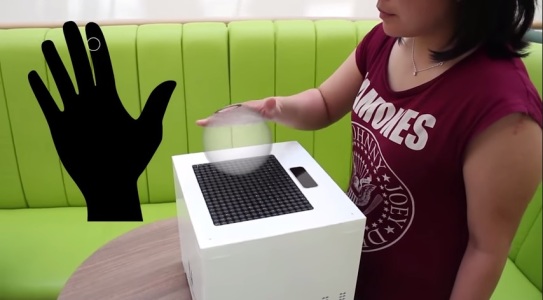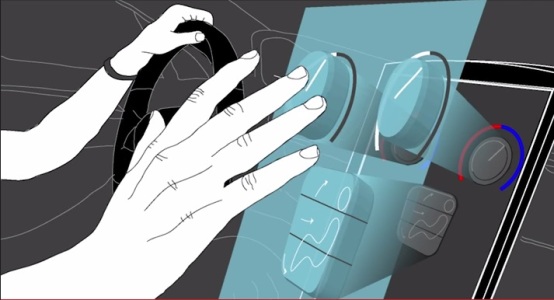So you’re walking along on your virtual treadmill, wearing your virtual reality goggles, and you come to a door. You stretch out your hand to push it open and feel … nothing. Because there’s no physical door actually there.
One way to fake a sense of touch is to attach an exoskeleton to your arms that knows where objects are in your environment, and keeps you from reaching through them. But you’d have to be wearing it on your whole body to keep you from reaching your entire arm through the door, or sticking your head through a wall.
A more user-friendly approach could lie in the field of ultrahaptics, the use of ultrasound waves to create a feeling of touch.

UK-based startup Ultrahaptics Ltd. just received a £600,000 investment — about US $944,000 — to commercialize this technology and hired an electronics industry veteran to run the company.

“Ultrahaptics has developed a unique technology that will revolutionise the gaming, automotive and gesture markets by enabling the user to ‘feel’ virtual objects and receive tactile feedback in mid-air,” new CEO Steve Cliffe said in a statement.
The technology is still bulky but is likely to become more compact quickly, as all technology does.
And applications go beyond virtual reality. For example, it can be used to replace knobs and buttons in traditional control panels of all kinds — stoves, elevators, even cars.
Car dashboards would particularly benefit since ultrahaptics would allow for an interface that can be used via touch alone, without the driver having to look away from the road.
Watch video below for more information.
- OSgrid back online after extended maintenance - April 16, 2025
- Analysts predict drop in headset sales this year - March 25, 2025
- OSgrid enters immediate long-term maintenance - March 5, 2025

